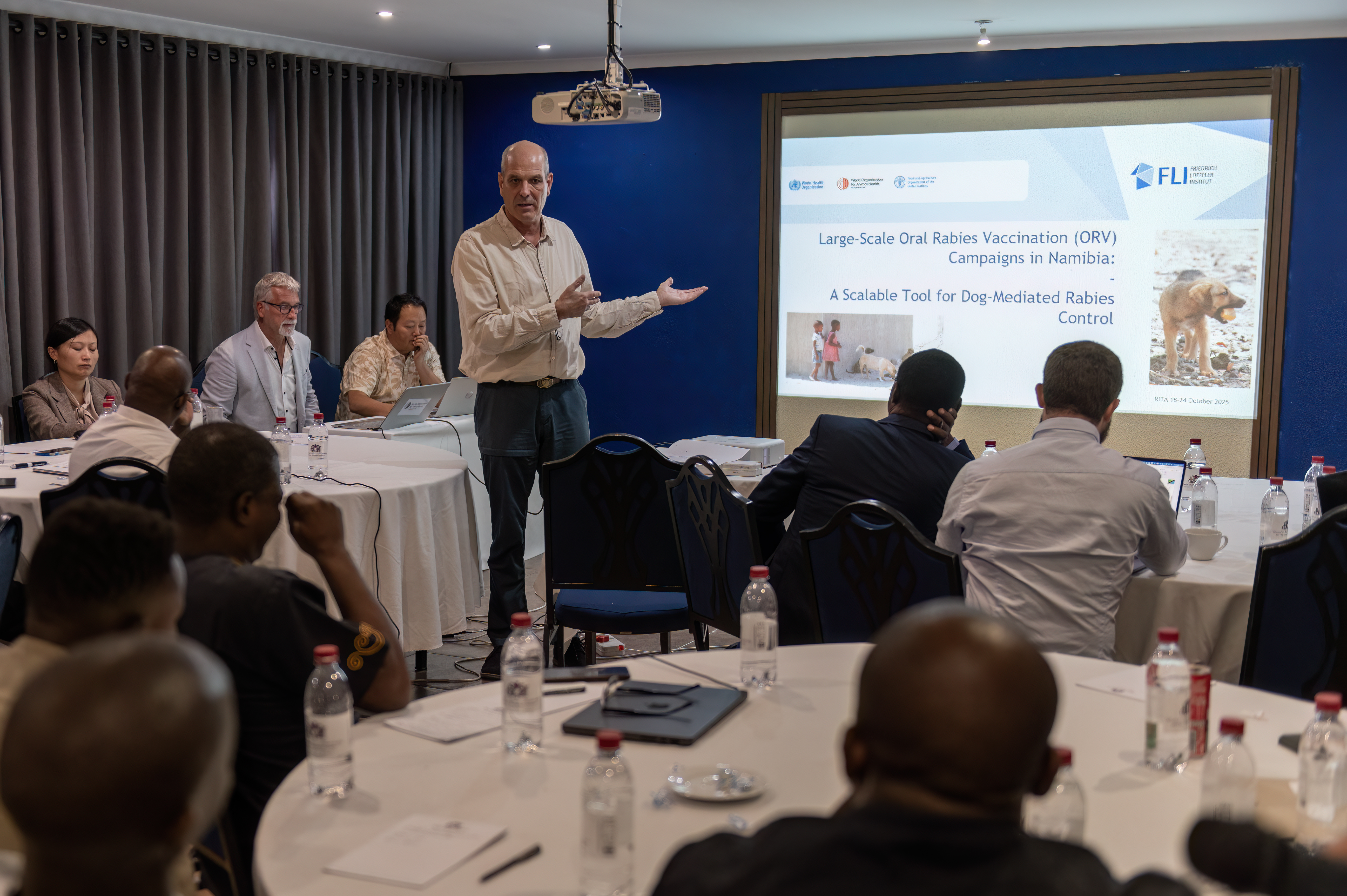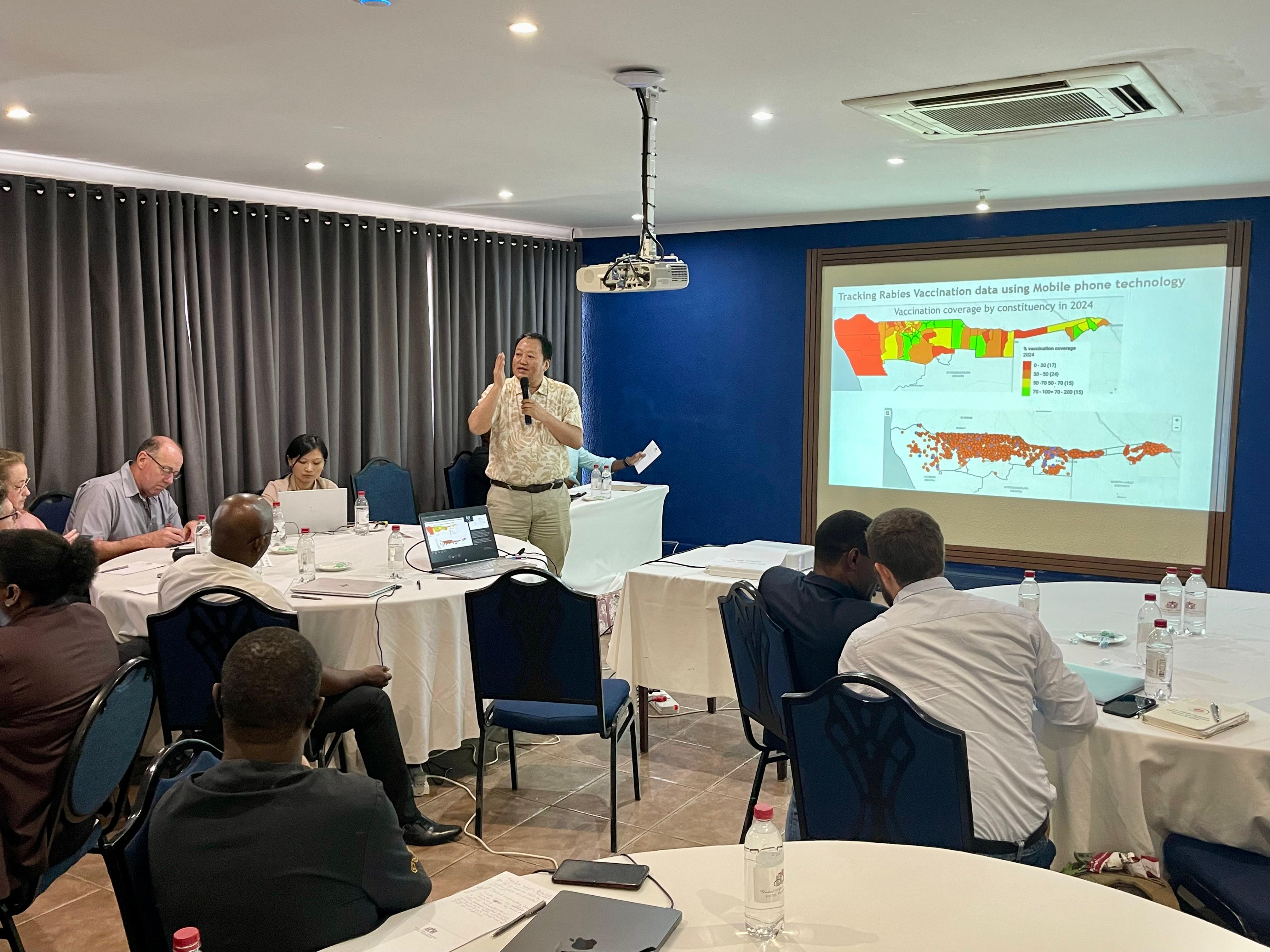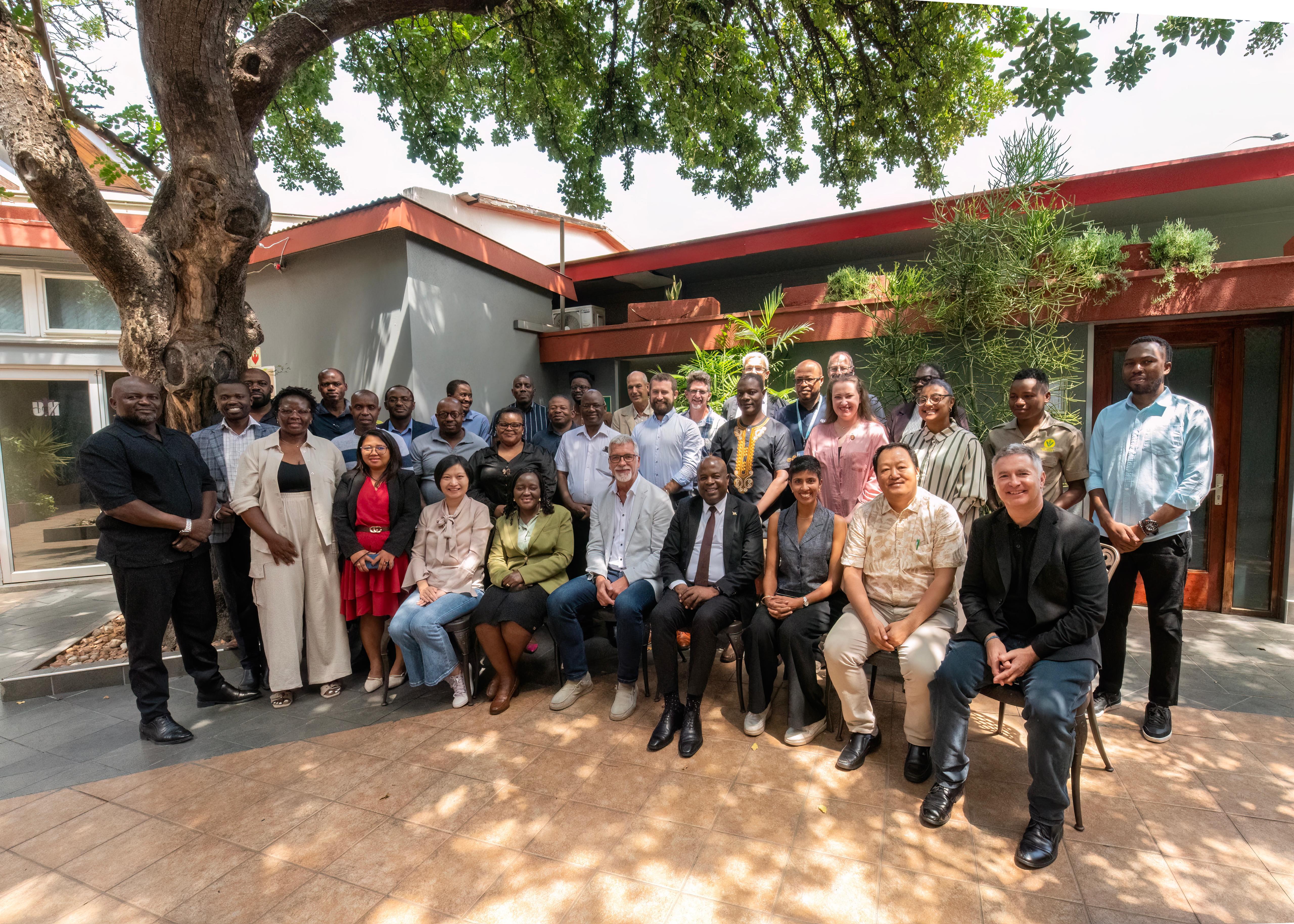
Dr Tenzin Tenzin (WOAH). Picture (c) communication (woah) 2025.
An international workshop on Oral Rabies Vaccination (ORV) in dogs was held in Windhoek, Namibia, from 5 to 6 November 2025. The event was jointly organised by the Directorate of Veterinary Services (DVS) in Namibia, the Friedrich-Loeffler-Institut (FLI) in Germany, and the World Organisation for Animal Health (WOAH), with the shared mission of advancing the fight against rabies, a disease that continues to claim thousands of lives each year, particularly in Africa and Asia.
The workshop served as a platform for technical exchange, collaboration, and hands‑on learning. Veterinary staff from Namibia and rabies contact points from Botswana, Madagascar, Malawi, South Africa, Tanzania, Zambia, and Zimbabwe participated, alongside international partners including WOAH, FAO, Mission Rabies, GARC, and CEVA Santé Animale.
The main objectives of the workshop were to build capacity and raise awareness among veterinary professionals, public health officials, and program implementers on the principles, planning, and practical implementation of ORV in dogs, particularly in endemic regions with large free‑roaming dog populations. Key objectives include:
The two‑day programme combined technical presentations, interactive sessions, case studies, and a hands‑on field exercise. Namibia has already pioneered ORV in Africa, conducting one of the largest programmes on the continent. ORV in dogs in Namibia has been implemented by the DVS with technical support provided by FLI, WOAH, and CEVA Santé Animale. These efforts have demonstrated the feasibility, safety, and strong community acceptance of ORV in African contexts.
The ORV workshop was officially opened by Dr. Kenneth Shoombe, WOAH Delegate and Chief Veterinary Officer of the DVS in Namibia. In his address, he noted Namibia’s remarkable progress in reducing human rabies deaths in the Northern Communal Areas, from 23 deaths in 2015 to just one case in 2025. He expressed appreciation to the Republic of Germany for financial support and to WOAH, FLI, and other partners for their technical assistance.
Dr. Tenzin Tenzin from WOAH highlighted that, after nearly a decade of collaboration between WOAH, FLI, and DVS Namibia, ever since the launch of the rabies elimination project in 2016, Namibia has reached a milestone that brings the country closer to the global goal of zero human deaths from dog‑mediated rabies by 2030. He emphasised that parenteral vaccination remains the primary strategy to achieve herd immunity, while ORV serves as a complementary tool to expand coverage, particularly among hard‑to‑reach, aggressive, and free‑roaming dogs. ORV is recommended by WOAH, WHO, and FAO.
Round table discussion. Picture (c) communication (woah) 2025.
The use of ORV in Namibia was spearheaded with technical support from FLI, alongside expertise and ORV baits – SPBN GASGAS – provided by CEVA Santé Animale. In his remarks, Dr. Thomas Müller from FLI, Germany congratulated Namibia for its achievements in reducing dog‑mediated human rabies deaths, for championing ORV in dogs, and for the decision to integrate ORV into the country’s regular annual mass dog vaccination campaigns. He reaffirmed FLI’s commitment to continue providing technical support to DVS Namibia in its rabies control program.
Dr. Yu Qiu from FAO highlighted FAO’s role in supporting rabies laboratory capacity building across Africa, particularly through proficiency testing for rabies, as well as contributing to broader One Health projects on the continent.
On the first day, participants engaged in technical sessions covering topics such as the limitations of parenteral vaccination in free‑roaming dogs, the history and concept of ORV, vaccine requirements, safety aspects of ORV use in the field, and critical considerations for importing and shipping ORV baits. Presentations showcased ORV activities worldwide and shared results from field trials in Namibia. Practical planning was emphasized through the use of mobile applications (WVS) to determine vaccination targets and locations, complemented by sessions on dog behavior and vaccination strategies. The day concluded with interactive discussions, setting the stage for hands‑on learning on the second day.
On the second day, participants moved into the field for a practical demonstration of ORV in one of Windhoek’s settlements. Eleven teams successfully vaccinated around 1,000 dogs using ORV baits, demonstrating the feasibility of this innovative approach under real‑field conditions. The exercise was followed by an exchange of experiences, reinforcing the message that ORV is a practical and effective tool to complement parenteral vaccination, particularly for hard‑to‑reach dog populations. However, concerns were raised about the cost of ORV, highlighting the need for sustainable strategies to ensure wider adoption.
In his closing remarks, the Chief Veterinary Officer of Namibia thanked all participants for their commitment and expressed gratitude to WOAH, FLI, and other partners for supporting Namibia in achieving the shared vision of eliminating dog‑mediated rabies deaths.
Namibia hosts international workshop on oral rabies vaccination (ORV) in dogs




